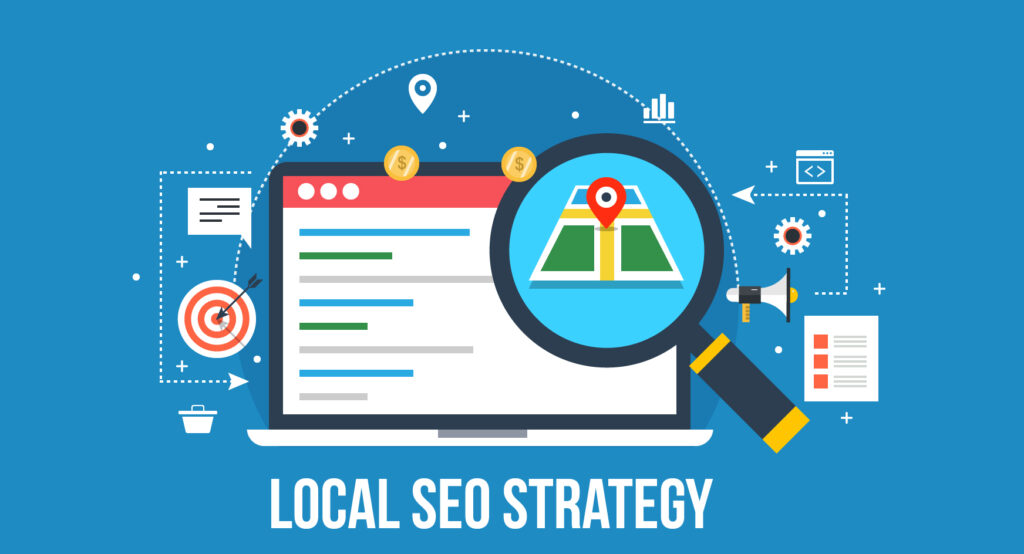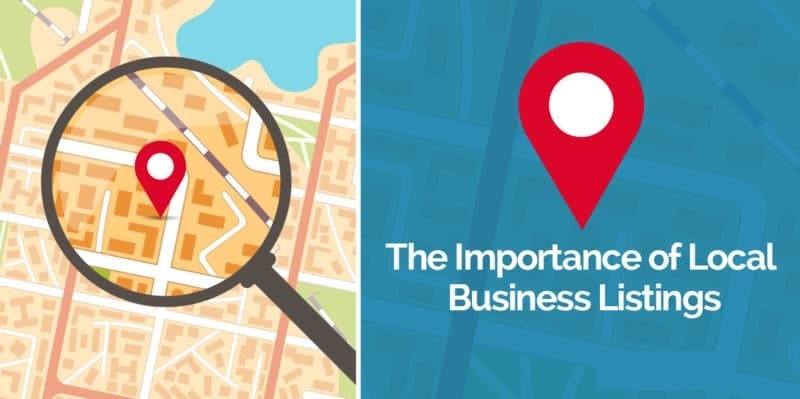Small businesses are a vital part of the local economy and community. They provide goods and services, create jobs, and help to bring people together. With so much to offer, it’s important for small businesses to have a strong online presence. Local SEO is one of the most effective ways to accomplish this.
Local SEO is the process of optimizing a website so that it appears prominently in local search engine results. This includes optimizing content, keywords, and backlinks to appeal to local customers. By utilizing local SEO, small businesses can gain more visibility and attract more customers. With the right approach, local SEO can be a powerful tool for small businesses.
Why Local SEO is Crucial for Small Businesses

Small businesses are struggling to stay afloat and remain competitive as the digital age takes hold. In order to remain visible in an ever-increasingly competitive market, local SEO is essential. By optimizing web pages for local searches, small businesses can ensure that they are seen by potential customers. This gives them the opportunity to establish a strong presence in their local market.
Increasing visibility for local businesses is not just about opening the doors to the physical shop, but rather being available to customers online. By investing in local SEO, small businesses can increase their visibility and reach potential customers who are searching for the services that they offer. This helps to ensure that local businesses can make the most of the digital age, competing with larger, more established companies in their area.
What is Local SEO?

Local SEO is a special form of SEO that focuses on optimizing websites for localized search queries. It is distinct from traditional SEO, as it involves a different set of tactics and strategies. The benefits of local SEO are numerous, including increased visibility, greater local brand recognition, and higher conversion rates. To get the most out of local SEO, effective strategies such as optimizing content for local keywords, creating localized content, and creating listings on local directories should be implemented.
How Local SEO is Different from SEO
Having discussed the basics of SEO, it is important to understand how Local SEO is different from SEO. Local SEO is a subset of SEO, wherein the focus is on optimizing a website to make it more visible in localized search results. It is designed to help businesses increase their visibility in local search results, such as maps and organic search results.
Local SEO is different from SEO in several ways. First, instead of focusing on general keywords, Local SEO takes into account the geographic location of a business. For example, instead of targeting a query like “SEO services,” a local business may target a query like “SEO services near me.” This allows businesses to target local customers who are searching for their services.
Second, Local SEO requires businesses to create and optimize local listings. This involves creating business listings on popular local business directories and review sites such as Google My Business, Yelp, Apple Maps, and Bing Places. These listings allow businesses to be found more easily by local customers who are searching for services in their area.
Finally, Local SEO requires businesses to optimize their website for local searches. This involves optimizing the website with location-specific keywords, such as the city and state of the business. Additionally, businesses should also ensure that their website is optimized for mobile devices, as most local searches are conducted on mobile devices. These efforts help businesses to be found more easily by local customers who are searching for their services.
Benefits of Local SEO
With the changing landscape of the internet, local SEO has become an increasingly important part of digital marketing. Local SEO is different from traditional SEO in that it focuses on optimizing for searches related to physical locations. It is essential for businesses that have a physical presence and want to be found in local searches.
The benefits of local SEO are numerous. For starters, local SEO allows businesses to target the exact local areas they serve. This can be especially helpful for businesses that serve only a few local areas, as they can focus their efforts and their budget on the areas they serve. Additionally, local SEO can help businesses stand out from the competition, as many local businesses do not take advantage of local SEO tools.
Local SEO also allows businesses to improve their visibility on search engines and appear to local users in the search results. This is especially useful for businesses that rely on local customers, as they are more likely to appear in local searches. Additionally, local SEO can help businesses appear in the “local pack” results at the top of the search engine results page, which can help them stand out even more.
Finally, local SEO can help businesses build trust with their local customers. This is because customers are more likely to trust businesses that are local to them. Additionally, local SEO provides businesses with more opportunities to engage with their local customers, as they can use local SEO to create content, such as blog posts and social media posts, that are tailored to their local audiences.
Optimizing Your Website for Local SEO

Optimizing your website for local SEO requires a comprehensive approach, beginning with your homepage. It should be designed to include elements like local contact information, local content, and local imagery to create a strong foundation for further optimization. Next, location pages should be created to provide detailed information about each location, including contact information, opening hours, and services offered. Finally, local keywords should be incorporated into the content of these pages to boost visibility in local search results.
Optimizing Your Homepage
In order to effectively utilize local SEO, website optimization is a key component of success. Optimizing your homepage is one of the most important steps for achieving the highest ranking possible in local search results. By utilizing the right keywords, meta tags, and content, you can effectively increase your website’s visibility for local searches.
Utilizing the correct keywords on your homepage is vital for local SEO success. Keywords should be relevant to the products or services that you offer, as well as the locations you serve. Incorporating location-specific keywords into titles, headings, and meta descriptions can improve your website’s visibility for those searches. Additionally, adding a local map to your homepage can help to boost your ranking for local searches.
Including content on your homepage that speaks to a local audience is also important for optimizing your website for local SEO. This content should feature content related to the area you serve, and should include reviews from customers who have used your services in the area. Adding this content is a great way to create an engaging and informative homepage that appeals to a local audience.
Finally, utilizing meta tags can also help to boost your website’s local visibility. Meta tags are snippets of text that are included in the HTML code of your website, and can be used to include location-specific keywords and phrases. By including these tags, search engines can better understand the content and relevance of your website, and can help to increase your website’s local visibility. With the right tactics, optimizing your homepage can help to increase your website’s visibility in local searches.
Creating Location Pages
Creating multiple location pages on your website is a crucial step for local SEO. Location pages give potential customers and search engines a comprehensive view of your business’s presence and relevance in a certain area. When creating location pages, remember to include the following elements:
The page should include the address and other contact information such as the telephone number and email address. For multiple locations, include a map of the region so customers can see where each location is located. You should also include a brief description of the services that you offer in that location. Give potential customers an idea of what to expect when they visit the physical location.
Include reviews and testimonials from customers who visited that particular location. This helps build trust and credibility with potential customers. Additionally, adding images of the actual location can also help customers visualize what they can expect when they arrive. You can also create specific content for each location page. This content should be tailored to the particular location and should focus on what makes that location unique.
Finally, make sure to optimize the page for local SEO. Include local keywords and phrases that are relevant to the area and services that you offer in that location. Make sure to include the city, county, and state in the title tag and the meta description. Doing this helps to ensure that your page shows up when a user searches for specific services or businesses in that local area.
Claiming and Optimizing Your Local Business Listings

Claiming your listings on Google My Business is a crucial step in optimizing your local business listings. Furthermore, leveraging local directories and creating location-specific content can help you target potential customers in your area. These strategies can help you generate more interest and maximize visibility for your business.
Claim Your Listings on Google My Business
Having optimized your website for local SEO, the next step is to claim and optimize your local business listings. Claiming your listings on Google My Business is the first step in this process. By doing so, you can ensure that your business is found by potential customers in your local area.
To get started, you’ll need to create a Google My Business profile. Once you’ve done this, you can start adding details about your business, such as your contact information, hours of operation, and a description of your services. You’ll also be able to upload photos of your business and add reviews from customers. All of this information will be used by Google to create a virtual listing for your business that will show up in local search results.
You should also take some time to fill out as much information as possible in your Google My Business profile. This will help your listing stand out from the competition and make it easier for potential customers to find your business. Additionally, it’s important to respond to reviews and messages from customers on your Google My Business profile, as this will help to build trust and credibility with potential customers.
Finally, you should also regularly monitor your Google My Business listing to make sure that all of the information is up-to-date and accurate. This will help to ensure that potential customers are seeing the most accurate information about your business and can more easily find it. In addition, you should take advantage of any features that Google My Business offers, such as the ability to add promotions or create posts about your business.
By claiming your Google My Business listing and optimizing it for local SEO, you can reach more potential customers in your local area and help your business stand out from the competition.
Utilizing Local Directories
The next step in optimizing your local SEO is to gain visibility for your business by claiming and optimizing your local business listings. Utilizing local directories is a great way to list your business and gain further exposure.
When creating a listing on a local directory, it is important to include all relevant information, such as your business name, address, phone number, website, and hours of operation. Additionally, providing a detailed description of your business and the services you offer can be helpful in attracting visitors to your website. For best results, use the same information across all local directories to ensure your business is easily found and that your information is consistent.
Including reviews and ratings is a great way to boost your local SEO visibility. Customers are increasingly relying on reviews and ratings to make their purchasing decisions. Encouraging customers to leave reviews on your local directory listings can be beneficial in showing potential customers the quality of your business and services.
Finally, it is important to link to your website from your local directory listings. Linking to your website can help boost your search engine rankings, as well as attract visitors to your site. Additionally, ensuring that your website is optimized for local SEO is essential to drawing in customers. With the right approach, utilizing local directories can be a powerful way to increase your visibility and attract more customers.
Building Citations and Backlinks

Creating quality content is essential for building citations and backlinks. A successful strategy involves the optimization of content with carefully chosen keywords and phrases to draw attention from search engines. Additionally, submitting content to relevant websites or directories to generate citations is a great way to attract organic traffic and establish credibility. Finally, obtaining backlinks from authoritative websites can help to boost search engine rankings and drive more visitors to the website.
Creating Quality Content
Having claimed and optimized your local business listings, the next step to building a successful local SEO campaign is to create quality content and build citations and backlinks. Creating quality content is a vital part of any local SEO strategy, as it is the content that will attract visitors and customers to your website.
When creating content, it is important to ensure that it is relevant to your business and your local community. This means including keywords that are relevant to your business and location, as well as providing helpful and informative content that speaks directly to your customers. Additionally, you should be sure to include visuals, such as photos or videos, to enhance the content and make it more engaging. Quality content should also be regularly updated to keep visitors engaged and to ensure that your website remains relevant in the eyes of search engines.
Finally, it is important to ensure that your content is optimized for mobile devices. This means that it should be formatted for small screens and should be easy to navigate. Additionally, the content should be optimized for voice search, as this is becoming increasingly popular. By optimizing for mobile devices, you can ensure that your content is accessible to all visitors, regardless of their device.
Creating quality content is an essential part of any local SEO campaign, as it is the content that will attract visitors and customers, as well as ensure that your website remains relevant in the eyes of search engines. By optimizing for mobile devices and including visuals, you can ensure that your content stands out from the competition and is easy to find.
Building Citations
Once you have claimed and optimized your local business listings, it’s time to build citations and backlinks. Building citations is the process of mentioning your business name, address, and phone number (NAP) on other websites. Citations can come in many forms, including directory listings, press releases, guest blog posts, and even social media profiles.
Citations are important for two reasons. First, they help search engines find and trust your business, which can improve your rankings in local search results. Second, they also help potential customers find your business more easily. By creating quality citations, you can help customers find your business on the web and even on their mobile devices.
When creating citations, it is important to ensure that the information is accurate and consistent. For example, if your business name is ABC Company, make sure that your citation lists your business name as ABC Company and not ABC Co. or ABC Co. Inc. Consistency is key when it comes to citations, as any discrepancies can confuse both search engines and customers.
It is also important to create citations on reputable websites. For example, if you are a local restaurant, you should create citations on local food blogs and restaurant directories. This will not only help customers find your business more easily but also help search engines understand that your business is relevant to the local food and restaurant scene. By creating quality citations on reputable websites, you can help your business stand out and attract more customers.
Optimizing for Voice Search

Optimizing for Voice Search requires a strategic approach to keyword selection, using conversational keywords to ensure results are relevant and tailored to local intent. Long-tail keywords should also be targeted to maximize the potential for voice search optimization.
Utilizing Conversational Keywords
With the rise of voice-enabled devices, optimizing for voice search is becoming increasingly important. Utilizing conversational keywords is an essential part of this process. This involves using natural language and natural phrasing to best reach potential customers. It includes using questions, statements, and commands to anticipate how users may be searching for a given product or service.
To successfully utilize conversational keywords, businesses must think about the intent behind a search. What is the user looking to do or find out? Questions such as who, what, when, where, why, and how are all important to consider, as they are common ways that users phrase searches. Additionally, adding location modifiers and other words that indicate a specific action can help to further refine a search query.
In addition to understanding the intent behind a search, businesses should also think about the context of a search. For instance, if someone is searching for a restaurant while they’re out and about, they may use language that implies they are looking for something nearby. Similarly, if someone is looking for a product they may use language that implies they are looking for something immediately. By understanding the context of a search, businesses can more accurately anticipate how users may be searching for their product or service.
Finally, businesses should look for opportunities to optimize their content for conversational keywords. This involves using natural language and phrasing, as well as commonly asked questions and keywords, to ensure that their content is as accessible as possible. Additionally, businesses should consider using structured data, such as Schema markup, to help search engines better understand their content.
By utilizing conversational keywords, businesses can more accurately target potential customers and ensure that their content is optimized for voice search. With the proper understanding of intent and context, businesses can provide a better search experience for their customers and increase their visibility in the digital landscape.
Optimizing for Local Intent
In order to capitalize on the growing trend of voice search, it is important to optimize for local intent. By understanding and addressing local search intent, businesses can access a larger audience, increase visibility, and drive more conversions.
Local intent optimization requires businesses to ensure their web content is up-to-date, relevant, and localized. This includes ensuring accurate contact information, such as a business address, phone number, and email address, is available on their website. Additionally, businesses should include unique and localized content on their website, such as detailed descriptions of products or services that highlight local relevance.
Furthermore, businesses should leverage local citations and backlinks to improve their local intent optimization efforts. Local citations are mentions of the business’s name, address, and phone number on other websites, and they are an important factor in local SEO. Additionally, local backlinks are links that lead to the business’s website from local websites, such as local news outlets, social media profiles, or directories.
Finally, businesses should consider implementing Schema markup for their website. Schema markup is a code that helps webpages communicate with search engines, and by adding this code to their website, businesses are able to ensure their website is correctly indexed by search engines. This results in better visibility for local search queries, and can help businesses appear in “near me” or local search results.
Overall, local intent optimization is crucial for businesses that want to capitalize on the growing trend of voice search. By creating accurate and localized content, leveraging local citations and backlinks, and implementing Schema markup, businesses can optimize for local intent and drive more conversions.
Utilizing Social Media Platforms

Utilizing social media platforms to their full potential requires a thoughtful approach, starting with creating local profiles that accurately reflect the brand and its mission. Effective promotion of special offers can be used to draw attention to the company and build an audience of loyal followers. Lastly, continuing to engage with this audience is essential for the success of the social media platform.
Creating Local Profiles
Harnessing the power of local profiles offers endless possibilities for businesses looking to bolster their digital marketing efforts. By setting up pages on sites like Yelp, Google My Business, and TripAdvisor, businesses can ensure their information is readily available to potential customers. This can include simple details such as website, hours of operation, and address, or more detailed descriptions of the company mission, core values, and services and products.
Local profile optimization can also be used to increase brand awareness and credibility. By utilizing the built-in review systems of local profile sites, businesses can showcase customer feedback and ratings. This serves to build trust with potential customers and can even be used as a way to boost the company’s position in local search rankings.
When creating local profiles, businesses should focus on providing accurate and up-to-date information. Clear images can be used to further engage potential customers and help them visualize the business. Links to the business’s website, blog, and social media pages should be included to draw users out of the local profile site and onto the website, where more detailed information can be found.
Another effective way to utilize local profiles is to offer special offers or discounts that are available exclusively to users of these sites. This not only encourages website visits but also provides an incentive for users to create accounts and interact with the brand. Ultimately, this can help to build a loyal customer base and drive more engagement with the business.
Promoting Special Offers
Like a beacon of light in the night, special offers can attract customers and help your business stand out from its competitors. Offering promotions and discounts is a great way to drive more customers to your business and can be used to target different kinds of audiences. When it comes to promoting special offers, the most important thing to consider is how to reach the right people.
Social media is one of the best places to promote your special offers. Whether it’s through organic posts or paid advertisements, social media can help you spread the word quickly. By using a combination of visuals, copy, and hashtags, you can create a captivating message that will draw your audience in and get them to take action.
In addition to posting your offers on social media, you can also use email marketing to send targeted offers to your customers. It’s important to personalize each email, to make sure they’re relevant and attractive to the individual. You can also use email to keep your customers informed about any new offers or changes to existing promotions.
Finally, you can use traditional methods such as print advertising and flyers to promote your offers. Depending on your industry and budget, you can create attractive visuals and copy to draw people in. You can also use these materials to inform people about any upcoming events or promotions. By combining both digital and traditional methods, you can ensure that you reach your target audience and get them to take advantage of your special offers.
Monitoring Your Results

Keeping an eye on the results of our marketing efforts is essential to success. Tracking local rankings, measuring Return on Investment (ROI), and examining site performance are three key components that should be closely monitored. Taking a closer look at these areas gives us a better understanding of where we stand in the market and what adjustments need to be made to improve our campaigns.
Tracking Local Rankings
Having successfully implemented a presence on social media platforms to engage customers, the next step is to monitor how well these efforts are paying off. To accurately assess the success of a business’s social media endeavors, tracking local rankings and measuring return on investment should be the focus.
Tracking local rankings is important to ensure that a business is visible in the local community. Local SEO is essential to ensure that the business is visible to potential customers in the area and that customers are finding the business easily through search engine results. To track local rankings, businesses should first establish a baseline. This baseline should include all the search engine results for target keywords within the local area. This baseline should be regularly monitored to ensure that the business is staying visible in the local search results.
Tools such as BrightLocal can be invaluable for businesses looking to track local rankings. BrightLocal offers detailed local rankings report that show how a business is performing in local search engine results. Additionally, BrightLocal also offers competitor analysis reports that compare the business against its competitors in terms of local SEO. These tools make it easy for businesses to assess how well they are performing in the local rankings and compare themselves to their competitors.
Businesses should also consider keeping an eye on reviews and ratings online. Reviews and ratings can have a big impact on local rankings as they are often taken into account in local SEO algorithms. Monitoring online reviews and ratings can help businesses to ensure that they are remaining visible in local rankings.
Overall, tracking local rankings is an important part of any business’s social media strategy. Tracking local rankings helps businesses to ensure that they are visible in the local area and that they are staying ahead of their competition in local SEO. By monitoring local rankings, businesses can ensure that their social media efforts are paying off.
Measuring ROI
Having established a presence on social media, it is important to measure the return on investment (ROI) to gain an understanding of the impact of social media campaigns. Measuring the ROI of a social media campaign can provide invaluable insights into the success of a campaign, enabling businesses to make informed decisions on which strategies and platforms to focus on for future campaigns.
To accurately measure the ROI of a social media campaign, businesses must establish a baseline to compare against. This baseline can include metrics such as website visits, sales, leads generated, and customer engagement. Once the baseline has been established, businesses can then track the impact of their campaigns and compare against the baseline. For example, if a business launches a social media campaign intended to increase website visits and sales, it can then measure the number of visits and sales generated as a result of the campaign.
It is also important to track the performance of individual campaigns, rather than relying solely on the overall ROI. This will enable businesses to gain a deeper understanding of which campaigns are performing better than others and identify which strategies are more effective in reaching their objectives. For instance, a business may notice that one of their campaigns receives more engagement and website visits than the other, and can then replicate the successful campaign for future campaigns.
Finally, businesses can use analytics tools to measure the ROI of their campaigns. These tools can provide detailed insights into the performance of campaigns, enabling businesses to track the ROI in real-time and make adjustments accordingly. This will enable businesses to ensure that their campaigns are as effective as possible and help them to maximize their return on investment.
Making Local SEO Part of Your Business Strategy

Developing a long-term strategy is essential for any business wishing to succeed in local SEO. Investing in local SEO lets businesses reach local consumers who are actively searching for their products and services. By optimizing a website for local SEO, businesses can capitalize on the growing trend of local search and increase online visibility.
Developing a Long-Term Strategy
Monitoring results is an essential part of local SEO, but it’s just one piece of the puzzle. To truly maximize the effectiveness of your SEO efforts, you must develop a long-term strategy. This strategy must take into account the ever-changing landscape of SEO and should be tailored to the unique needs of your business.
The first step to developing a long-term strategy is to invest in local SEO. This involves creating content that is tailored to your local audience, optimizing your website for local search engine results pages (SERPs), and building a strong presence on local review websites. By optimizing your website for local SEO, you can ensure that your business is visible to people in your area when they search for products or services related to your industry.
In addition to investing in local SEO, it’s important to ensure that your website is optimized for local search engine results pages (SERPs). This includes creating content that is tailored to your local audience, optimizing on-page elements such as titles and meta descriptions, and ensuring that your website is mobile-friendly. By optimizing your website for local SERPs, you can increase your chances of appearing prominently in local search engine results pages, which can improve your visibility and ultimately drive more traffic to your website.
Finally, it’s important to build a strong presence on local review websites. This includes responding to customer reviews, offering incentives for customers to leave reviews, and developing a reputation for providing excellent customer service. By building a strong presence on local review websites, you can increase your visibility and enhance your reputation in your local area.
Developing a long-term strategy for local SEO can be a daunting task. However, with the right approach and the proper investment, you can ensure that your business is visible to local customers and that your local SEO efforts have the greatest impact.
Investing in Local SEO
Investing in local SEO is an important part of developing a long-term strategy for success. Valuable resources need to be allocated to ensure that the website is optimized for local SEO and that local SEO tactics are implemented on a regular basis.
In order to capitalize on local SEO, businesses need to research and analyze the keywords that will be most profitable for their target audience. Keyword research should be done on a regular basis to ensure that the website is targeting the most relevant and up-to-date keywords. Additionally, businesses need to create local content that is optimized for local SEO. This content should be comprehensive, original, and relevant to the local area.
Businesses should also look into link building to increase the visibility of their website. Link building involves obtaining links from other websites that are related to the business’s services or products. This helps search engines recognize the website and can also help to establish the website’s credibility. Additionally, businesses should invest in social media marketing in order to connect with potential customers and increase their visibility.
Finally, businesses should invest in search engine optimization (SEO) services in order to ensure that their website is properly optimized and that their local SEO tactics are successful. SEO services can help businesses to stay ahead of the competition and to ensure that their website is properly optimized for local search engine results.
Conclusion
Local SEO is an essential tool for small businesses, allowing them to reach their local target audience and increase their visibility online. With the right optimization strategies in place, small businesses can capitalize on local SEO to make their business more successful and strengthen their online presence. By using local SEO to build citations and backlinks, optimize for voice search, and utilize social media platforms, small businesses can give their business the competitive edge it needs to succeed and thrive in today’s digital world.



